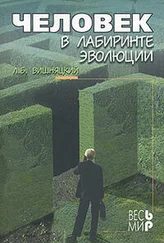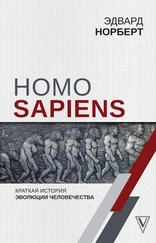Soressi M., Jones H. L., Rink W. J., Maureille B., Tillier A.-M. The Pech-de-l’Azé I Neandertal child: ESR, uranium-series, and AMS 14C dating of its MTA type B context // JHE. 2007. N 52. P. 455–466.
Spencer F. The Neandertals and their evolutionary significance: A brief historical survey // F. H. Smith, F. Spencer. (eds). The Origins of Modern Humans. A World Survey of the Fossil Evidence. New York: Alan R. Liss, Inc., 1984. P. 1–49.
Spencer F., Smith F. H. The significance of Ales Hrdlička’s “Neandertal phase of man”: a historical and current assessment // AJPA. 1981. N 56. P. 435–59.
Speth J. D., Tchernov E. Neandertal hunting and meat-processing in the Near East: evidence from Kebara Cave (Israel) // C. B. Stanford, H. T. Bunn (eds). Meat-Eating and Human Evolution. Oxford: Oxford University Press, 2001. P. 52–72.
Spoor F., Hublin J.-J., Braun M., Zonneveld F. The bony labyrinth of Neanderthals // JHE. 2003. N 44. P. 141–165.
Steegmann A. T., Cerny F. J., Holliday T. W. Neandertal cold adaptation: physiological and energetic factors // AJHB. 2002. N 14. P. 566–583.
Stefan V. H., Trinkaus E. Discrete trait and dental morphometric affinities of the Tabun 2 mandible // JHE. 1998a. N 34. P. 443–468.
Stefan V. H., Trinkaus E. La Quina 9 and Neandertal mandibular variability // BMSAP. 1998b. N 10. P. 293–324.
Steudel-Numbers R. L., Tilkens M. J. The effect of lower limb length on the energetic cost of locomotion: implications for fossil hominins // JHE 47. 2004. P. 95–109.
Stewart J. R. The ecology and adaptation of Neanderthals during the non-analogue environment of Oxygen Isotope Stage 3 // QI. 2005. N 137. P. 35–46.
Stiner M. C. The faunal remains from Grotta Guattari: A taphonomic perspective // CAn. 1991. N 32. P. 103–117.
Stiner M. C. Small animal exploitation and its relation to hunting, scavenging, and gathering in the Italian Mousterian // G. L. Peterkin, H. Bricker, P. Mellars (eds). Hunting and Animal Exploitation in the Later Palaeolithic and Mesolithic of Eurasia. Washington DC: American Anthropological Association, 1993. P. 107–125.
Stiner M. C. Honor Among Thieves: A Zooarchaeological Study of Neandertal Ecology. Princeton: Princeton University Press, 1994.
Stolyhwo K. Homo primigenius appartient-il à une espèce distincte de Homo sapiens ? // L’Anthropologie. 1908a. N 19. P. 191–216.
Stolyhwo K. Le crâne de Nowosiolka considéré com preuve de l’existence à l’époque historique de formes apparentées à H. primigenius // Bulletin International de l’Académie des Sciences de Cracovie. 1908b. P. 103–26.
Stoner B. P., Trinkaus E. Getting a grip on the Neandertals: Were they all thumbs? // AJPA. 1981. N 54. P. 281–82.
Størmer F. C., Mysterud I. Cave smoke: air pollution poisoning involved in Neanderthal extinction? // MH. 2006. N 66. P. 723–724.
Straus W. L., Cave A. J. E. Pathology and posture of Neanderthal Man // QRB. 1957. N 32. P. 348–63.
Stringer C. Modern human origins: progress and prospects // PTRSL (B). 2002. N 357. P. 563–579.
Stringer C. The Neanderthal — H. sapiens interface in Eurasia // K. Harvati, T. Harrison (eds). Neanderthals Revisited: New Approaches and Perspectives. Dordrecht: Springer, 2006. P. 315–323.
Stringer C., Gamble C. In Search of the Neanderthals. New York: Thames and Hudson, 1993.
Stringer C. B., Hublin J.-J. New age estimates for the Swanscombe hominid, and their significance for human evolution // JHE. 1999. N 37. P. 873–877.
Stringer C. B., Finlayson J. C., Barton R. N. E., Fernandez-Jalvo Y., Caceres I., Sabin R. C., Rhodes E. J., Currant A. P., Rodriguez-Vidal F., Giles-Pacheco F., Riquelme-Cantal J. A. Neanderthal exploitation of marine mammals in Gibraltar // PNAS. 2008. N 105. P. 14319–14324.
Swisher C. C. III et al. Latest Homo erectus of Java: Potential contemporaneity with Homo sapiens in South-east Asia // Science. 1996. N 274. P. 1870–1874.
Tattersall I. The Last Neanderthal. The Rise, Success, and Mysterious Extinction of Our Closest Relatives. New York: Macmillan, 1995.
Tattersall I. What happened in the origins of human consciousness // AR. 2004. N 276B. P. 19–26.
Tattersall I. Neanderthal skeletal structure and the place of Homo neanderthalensis in European hominid phylogeny // HE. 2006. N 21. P. 269–274.
Tattersall I. Neanderthals, Homo sapiens , and the question of species in paleoanthropology // JAnS. 2007. N 85. P. 139–146.
Tattersall I. Human origins: Out of Africa // PNAS. 2009. N 106. P. 16018–16021.
Tattersall I., Schwartz J. H. Hominids and hybrids: The place of Neanderthals in human evolution // PNAS. 1999. N 96. P. 7117–7119.
Tattersall I., Schwartz J. H. Extinct Humans. Boulder, CO: A Peter N. Nevraumont Book/Westview Press, 2000.
Tattersall I., Schwartz J. H. The distinctiveness and systematic context of Homo neanderthalensis // K. Harvati, T. Harrison (eds). Neanderthals Revisited: New Approaches and Perspectives. Dordrecht: Springer, 2006. P. 9–22.
Tattersall I., Schwartz J. H. The Morphological distinctiveness of Homo sapiens and its recognition in the fossil record: Clarifying the problem // EA. 2008. N 17. P. 49–54.
Thieme H. Lower Palaeolithic hunting spears from Germany // Nature. 1997. N 385. P. 807–810.
Thieme H. Lower Palaeolithic throwing spears and other wooden implements from Schöningen, Germany // H. Ullrich (ed). Hominid Evolution: Lifestyles and Strategies. Gelsenkirchen; Schwelm: Edition Archaea, 1999. P. 383–395.
Thieme H. The Lower Palaeolithic art of hunting. The case of Schöningen I 3 II-4, Lower Saxony, Germany // C. Gamble, M. Porr (eds). The Hominid Individual in Context. Archaeological investigations of Lower and Middle Palaeolithic Landscapes, Locales and Artifacts. New York: Routledge, 2005. P. 115–132.
Tillet T. Les grottes a ours et occupations Neandertaliennes dans les Alps // L’ours et L’homme. Liège: ERAUL, 2002. P. 167–84.
Trinkaus E. Hard times among the Neanderthals // NHR. 1978. P. 58–63.
Trinkaus E. Sexual differences in Neanderthal limb bones // JHE. 1980. N 9. P. 377–397.
Trinkaus E. Neanderthal limb proportions and cold adaptation // C. B. Stringer (ed). Aspects of Human Evolution. London: Taylor and Francis, 1981. P. 187–124.
Trinkaus E. Artificial cranial deformation in the Shanidar 1 and 5 Neandertals // CAn. 1982. N 23. P. 198–199.
Trinkaus E. The Neandertal face: Evolutionary and functional perspectives on a recent hominid face // JHE. 1987. N 16. P. 429–443.
Trinkaus E. The evolutionary origins of the Neandertals or, why were there Neandertals // E. Trinkaus (ed). L’Homme de Néandertal. Vol. 3. L’Anatomie. Liège: ERAUL, 1988. P. 11–29.
Trinkaus E. Neanderthal mortality patterns // JAS. 1995. N 22. P. 121–142.
Trinkaus E. Appendicular robusticity and the paleobiology of modern human emergence // PNAS. 1997. N 94. P. 13367–13373.
Trinkaus E. Neandertal faces were not long; modern human faces are short // PNAS. 2003. N 100. P. 8142–8145.
Trinkaus E. Early modern humans // ARA. 2005. N 34. P. 207–230.
Trinkaus E., Shipman P. The Neandertals. Of Skeletons, Scientists, and Scandal. New York: Vintage Books, 1994.
Trinkaus E., Zilhão J. Phylogenetic implications // J. Zilhão and E. Trinkaus (eds). Portrait of the Artist as a Child. The Gravettian Human Skeleton From the Abrigo do Lagar Velho and Its Archeological Context. (Trabalhos de Arqueologia 22). Lisboa: Instituto Português de Arqueologia, 2002. P. 497–518.
Читать дальше








